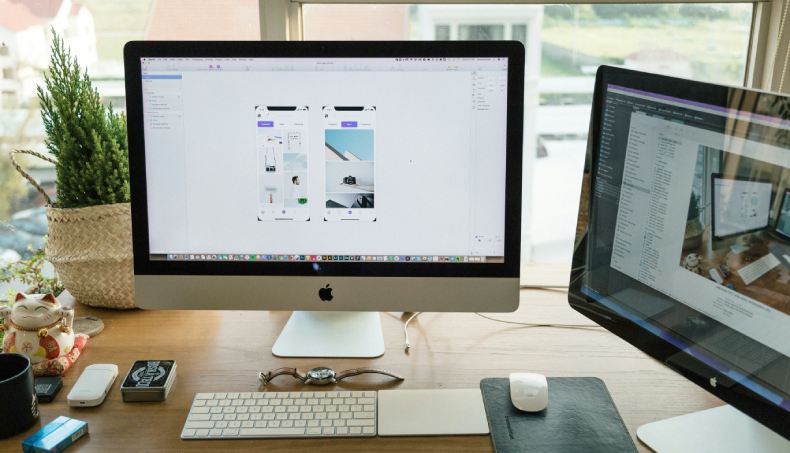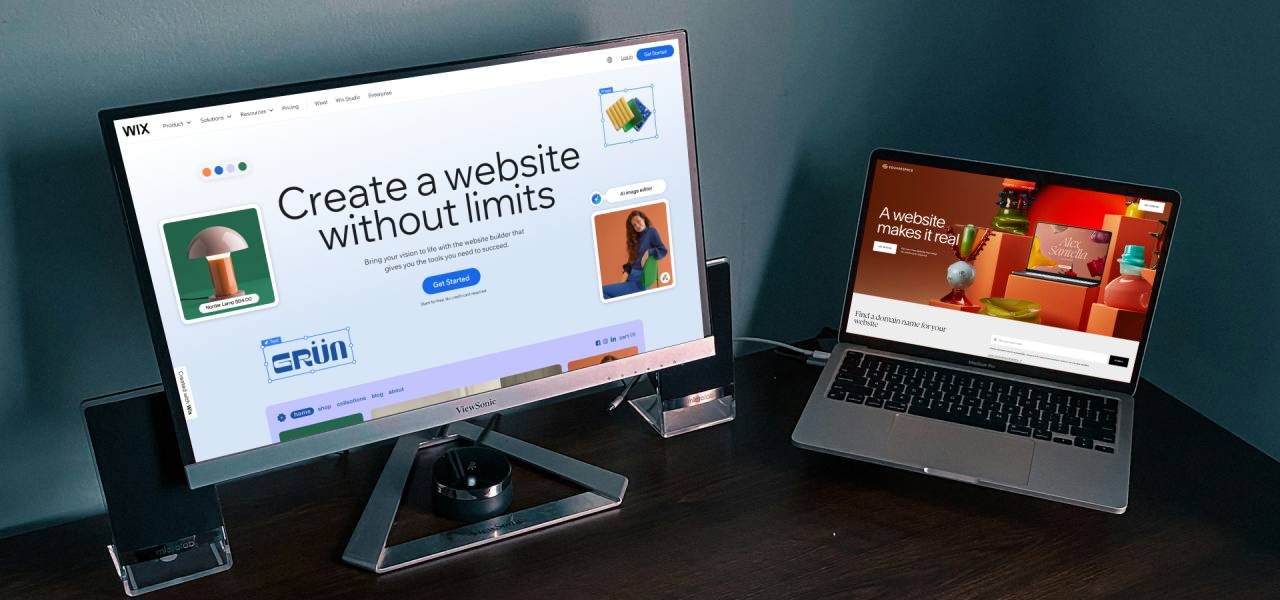It’s tempting, right?
You’re launching a business, watching your budget like a hawk, and every website builder ad promises the same thing: “Create your website today — no experience needed!, It’s easy.” So you click. You pick a template. You drag. You drop. Boom — instant website.
But here’s the catch: what feels “cheap” now can get very expensive later — and not just in dollars.
DIY platforms like Wix, Squarespace, and GoDaddy are designed to get you online fast. But speed doesn’t equal strategy, and saving money up front often leads to missed revenue, lost credibility, and hidden limitations that no one warned you about.
We’ve worked with tons of business owners who came to us after their “quick and easy” site failed to deliver. Not because they did anything wrong — but because these platforms aren’t built to grow your business. They’re built to scale theirs.
Let’s break down what DIY builders don’t tell you — and what a professional website actually delivers.
The Rise of the “Quick and Easy” Website Builders

Wix. Squarespace. GoDaddy. Weebly. You’ve probably heard of them — maybe even used one. These platforms dominate YouTube ads, social feeds, and podcast sponsorships, all selling the same dream: a beautiful website in minutes, no code required.
And it’s true — kind of.
For small business owners trying to juggle a hundred things at once, the promise is seductive:
- Drag-and-drop simplicity
- Pre-built templates
- Affordable monthly fees
- No need to hire a designer or developer
It sounds like the perfect shortcut, especially when you’re just starting out. But there’s a reason these platforms are booming — and it’s not because they’re the best option for your business. It’s because they’re built to scale their own revenue, not yours.
These DIY tools are great for hobby blogs, side hustles, or testing ideas. But when you’re trying to establish a serious, credible business presence, the cracks start to show quickly.
And once you’re in, you’re locked into their ecosystem — not yours.
The Hidden Costs No One Talks About

Let’s get one thing straight: the word “cheap” is doing a lot of heavy lifting in the world of DIY websites. Sure, the entry point might be low — $0 to $25 a month, depending on the platform — but what you don’t see upfront is where these builders start taking from your time, flexibility, and growth.
Here’s what you’re really paying for:
Locked Into Limitations
Most DIY platforms run on proprietary systems. That means you can’t easily take your website elsewhere. Want to switch hosts? Too bad. Need custom functionality? You’ll hit a paywall. And if you ever want to redesign or rebrand? That “template” you picked is now your prison.
The Upgrade Trap
They hook you with a free plan, but once you want to remove ads, connect a custom domain, or use real business tools (like contact forms, email integration, or analytics), the costs pile up. You’ll find yourself in a constant game of nickel-and-dime upgrades — and that monthly $12 plan quickly turns into $40+.
Poor Performance
DIY sites are often slow. Their templates are bloated with unnecessary code, and shared hosting slows load times even further. That’s bad for users, worse for SEO. Google penalizes slow sites. So do your potential customers.
Mobile (Kind Of) Friendly
Sure, many builders claim “mobile optimization,” but in practice, templates don’t always adapt cleanly. You might spend hours reworking your mobile layout manually, and still end up with a clunky user experience on phones — where most visitors are coming from.
No Real Strategy
You get a template. You fill it in. That’s it. But what about brand positioning? What about converting visitors into leads? DIY platforms don’t give you the benefit of marketing strategy, UX best practices, or content planning. That’s not a flaw — it’s just not what they’re designed for.
You’re Renting Your Website, Not Owning It

Here’s something the DIY platforms don’t put in bold on their pricing pages:
You don’t actually own your website.
When you use Wix, Squarespace, GoDaddy Builder, or any other closed-source website platform, you’re building your online presence on someone else’s land. It’s like renting space in a mall — you may have a store, but the landlord still controls the locks.
What They Can Do (That You Can’t Stop)
- Raise your monthly price without notice
- Limit features on your plan or remove them entirely
- Suspend or delete your account if it violates their terms (even unintentionally)
- Force branding (e.g., “Powered by Wix”) unless you upgrade
- Restrict access to the backend or source files of your own site
All of this adds up to a situation where you appear to have control — but really, you’re on borrowed time.
The WordPress Difference: You Own It
We build exclusively on WordPress, the world’s most trusted open-source content management system. Why?
Because with WordPress:
- You own the code and content
- You choose the hosting provider
- You can move your site any time
- You’re never locked into a platform or pricing structure
We’re not interested in locking clients into a platform they don’t control. Instead, we empower business owners with a site they can build on, scale, and actually own — for the long haul.
“If your website is part of your business, you should own it — just like you would your storefront or brand.”
It’s Not Just Ugly — It’s Hurting Your Bottom Line

We’ve all landed on one of those websites.
Tiny fonts. Weird colors. Menus that vanish on mobile. Pop-ups you can’t close. You cringe… and you bounce.
Now imagine that site belongs to a small business trying to win your trust.
That’s the reality for countless business owners who go DIY and don’t realize the hidden damage bad design can cause.
First Impressions = Real Consequences
Studies show that 75% of users judge a company’s credibility based on their website. That means poor layout, outdated visuals, or confusing UX isn’t just an aesthetic problem — it’s a trust killer.
Poor UX = Lost Revenue
DIY websites often skip over critical user experience details:
- Confusing navigation
- Cluttered pages with no visual hierarchy
- No clear calls-to-action
- Slow loading = instant exits
Your website isn’t just a digital business card — it’s a conversion tool. If it doesn’t guide visitors toward taking action (like contacting you), you’re losing potential customers every single day.
Bad SEO Built Right In
Many DIY platforms generate bloated code and lack proper SEO architecture:
- No header structure (H1/H2 optimization)
- Weak or auto-generated meta descriptions
- Poor mobile responsiveness
- No schema markup
- No control over URLs or redirects
Google doesn’t love that. And if Google doesn’t love your site, your customers won’t even find it.
Bad design might not seem like a big deal — until it starts hurting your search rankings, your credibility, and your bottom line.
A professional website doesn’t just look good. It works for your business.
When It’s Time to Call in the Pros

We’re not saying every business needs a $10,000 custom site from day one. But if your website is more than a placeholder — if it’s meant to generate leads, showcase your brand, and grow your business — then there comes a point when DIY just isn’t enough.
Here’s how you know it’s time to bring in a professional:
You’re embarrassed to send people to your site
If you find yourself saying “just ignore the website” on sales calls or networking events, it’s time.
You’ve outgrown the template
You want to offer more services, create better content, or integrate tools — but your platform won’t let you.
You’re not showing up in search
DIY platforms rarely give you full control over SEO, and you’re missing out on potential customers every day.
You want your website to actually do something
Lead forms, gated content, bookings, CRM integration — the kind of functionality that moves people from curious to converted.
You’re building a real brand
If you’ve invested in a logo, messaging, or marketing — why send people to a cookie-cutter site that looks like 10,000 others?
Why It Pays to Hire a Pro
A professional website isn’t just about beauty — it’s about strategy, conversion, and control. When you work with Alliance Web Design, you get:
- A custom, branded WordPress site you actually own
- Real SEO optimization from day one
- A user experience built to turn visitors into leads
- Ongoing support and flexibility to grow your business
You’re not just hiring a designer — you’re investing in your digital storefront, your marketing engine, your 24/7 sales tool.
The Bottom Line: Your Business Deserves Better
If you’re serious about your business, your website shouldn’t be an afterthought — and it definitely shouldn’t be someone else’s asset. The “cheap” route might feel like a win at first, but once you add up the limitations, lost traffic, and missed opportunities, it often ends up costing far more than expected.
And here’s the truth: you don’t have to settle for a generic, locked-down, underperforming site. You can have a website that’s uniquely yours, built to perform, and designed to grow with you — not hold you back.
We create WordPress websites that are fast, flexible, fully yours, and built to convert. Whether you’re starting fresh or need to level up an underwhelming DIY build, we’ve got your back. Contact us today and let’s build a website that actually works for your business.

